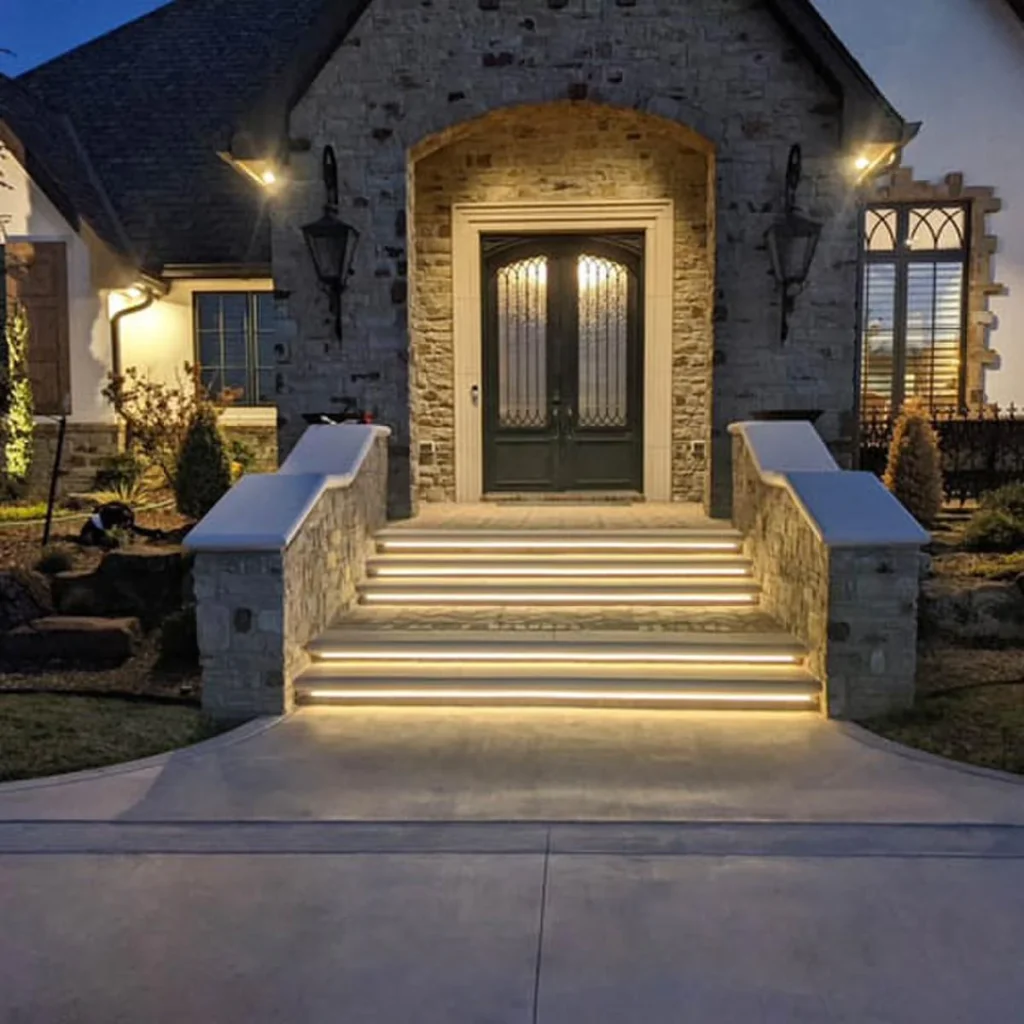If you’ve ever installed a long run of LED lighting — whether it’s for a wedding venue, a commercial building, or a permanent installation on a home — you’ve probably dealt with voltage drop. This is where power injection becomes crucial. At Luxury Lighting Solutions, we’ve worked on countless setups across Nebraska, and power injection is one of those backend techniques that can make or break a clean, consistent lighting display.
This post is for contractors who want to understand when and why to use power injection, and how different voltage systems (12V, 24V, 36V, 48V) play into that.
What Is Power Injection?
Power injection refers to the practice of supplying additional power at strategic points along a run of low-voltage LEDs to prevent voltage drop — a reduction in voltage that causes dim or uneven lights, especially near the end of the line.
In basic terms: the longer the run and the more LEDs you power, the more resistance you face. Power injection keeps everything consistent and bright.

12V Systems
- Pros: Widely available, safe to handle, and great for short runs.
- Cons: Higher current draw, more voltage drop, and more frequent power injection required.
- Max Practical Run Before Drop: ~16-20 feet (depends on wire gauge and LED load).
When to Use 12V: Small residential jobs, short patio runs, accent lighting, or tight, intricate installations where low-voltage safety is a must.
Contractor Tip: Use heavier gauge wire (16AWG or better) and plan on injecting power every 15-20 feet or after high-load points.
24V Systems
- Pros: Lower current than 12V, better for medium-length runs, more efficient.
- Cons: Still needs power injection on long runs, but less often.
- Max Practical Run: ~30-40 feet without injection.
When to Use 24V: Medium-length eave lighting, under-cap hardscape lights, or wrapping medium trees for events.
Contractor Tip: If you’re using pixel LEDs for dynamic effects, 24V gives you more breathing room than 12V while keeping things easy to work with.
36V Systems
- Pros: Even lower current, significantly less voltage drop, longer runs possible.
- Cons: Fewer off-the-shelf products available, requires more planning.
- Max Practical Run: ~60-80 feet before injection is needed.
When to Use 36V: Larger commercial facades, wedding tents, tree wraps where wire length adds up fast, or anytime you want to minimize injection points.
Contractor Tip: You’ll still want to test your voltage at the end of each run — especially with RGB or pixel systems. Some nodes are more sensitive to drop than others.
48V Systems
- Pros: The best for long runs with minimal voltage drop; fewer injection points; lower current = less heat and thinner wire.
- Cons: May require step-down converters for devices or controllers not rated for 48V, more caution needed during install.
- Max Practical Run: Up to 100 feet or more before injection.
When to Use 48V: Permanent installations with very long runs (like full rooflines), high-density pixel arrays, or large commercial projects where efficiency and fewer wires matter.
Contractor Tip: Use inline fusing or over-current protection — while still “low voltage,” 48V systems carry more potential energy and deserve respect on the job site.
Choosing the Right Voltage for Your Job
| Voltage | Max Run (Approx) | Injection Frequency | Best For |
|---|---|---|---|
| 12V | 16-20 ft | Every 15-20 ft | Small jobs, safety-focused work |
| 24V | 30-40 ft | Every 30-40 ft | Medium installs, pixel systems |
| 36V | 60-80 ft | Every 60-80 ft | Long runs, commercial or wedding/event |
| 48V | 100+ ft | Minimal | Long-term installs, high efficiency |
Final Thoughts
Understanding power injection and voltage systems isn’t just about making your installs look better — it’s about doing the job right the first time. Poor planning can lead to callbacks, dim zones, or even damaged equipment.
At Luxury Lighting Solutions, we’ve tested these systems across all kinds of Nebraska weather and terrain. Whether you’re wrapping trees for a wedding in Aurora, NE, or installing permanent RGB lighting on a restaurant, choosing the right voltage and planning injection points is what separates the pros from the amateurs.
If you’re a contractor looking to level up your lighting installs, or want help sourcing the right products and designs, feel free to reach out — we’re always happy to talk shop.


